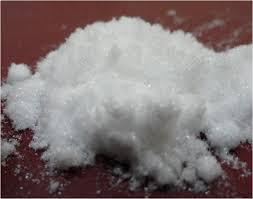Blog
Crystals In Ketamine

Crystals In Ketamine, Ketamine is a well-known dissociative anesthetic that has gained popularity both in the medical field and, controversially, in recreational settings. One of the most intriguing aspects of this substance is its physical form—particularly the appearance of crystals in ketamine. These ketamine crystals are not only a visual hallmark of the drug in its raw state but also a key component in its processing and application.
What Are Ketamine Crystals?
Ketamine crystals are the raw, crystalline form of the compound before it is processed into liquid or powdered forms for medical use. These crystals usually appear as transparent or slightly off-white shards and are produced through a chemical synthesis process in a lab. They are a result of ketamine hydrochloride solidifying during its manufacturing process.
The formation of crystals in ketamine is influenced by several factors including temperature, solvent evaporation rates, and purity of the compound. High-quality ketamine typically yields well-defined, clean crystals. Lower-quality production might result in cloudy or irregular formations, which can indicate impurities.
Medical Use of Ketamine Crystals
In medical settings, ketamine is rarely used in its crystal form. Instead, it is converted into a liquid for intravenous or intramuscular injection. However, the crystal stage is crucial in the production chain. Manufacturers start with ketamine crystals and dissolve them to create the injectable solution found in hospitals and clinics around the world.
Ketamine is commonly used as an anesthetic in both human and veterinary medicine. In recent years, it has also gained attention as a potential treatment for depression, PTSD, and chronic pain when administered in controlled clinical environments.
Crystals in Ketamine and Illicit Use
Outside of medical use, crystals in ketamine are often crushed into a fine powder and used recreationally. This non-medical use is illegal in most countries and poses significant health risks. Because the powder is frequently adulterated or synthesized in unregulated labs, users may be exposed to impure substances.
Recreational users may refer to this powder as “Special K,” and it is typically insufflated (snorted). The dissociative effects can include hallucinations, numbness, and a sense of detachment from reality—symptoms that make the substance attractive to some, but highly dangerous, especially in higher doses.
Risks and Legal Status
The presence of crystals in ketamine does not guarantee purity or safety. While the crystalline form might suggest a raw or “pure” product, only laboratory testing can confirm its contents. Moreover, in many jurisdictions, possession or distribution of ketamine in any form is illegal without proper licensing.
The increasing non-medical use of ketamine has led to tighter regulations and monitoring of the drug globally. The World Health Organization continues to list ketamine as an essential medicine, but it also warns of the rising misuse and associated health hazards.
Conclusion
Crystals in ketamine represent the foundational form of this powerful anesthetic. While these crystals are a critical part of legitimate pharmaceutical manufacturing, they are also central to the drug’s illicit use. Understanding the nature and implications of ketamine crystals is essential for recognizing both the medical potential and the dangers associated with this compound. Whether used in hospitals or misused on the streets, ketamine’s crystalline structure is a reminder of the thin line between medicine and misuse.
